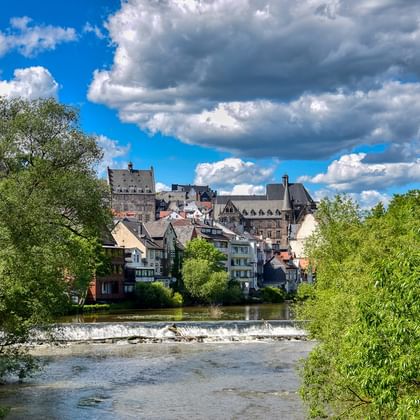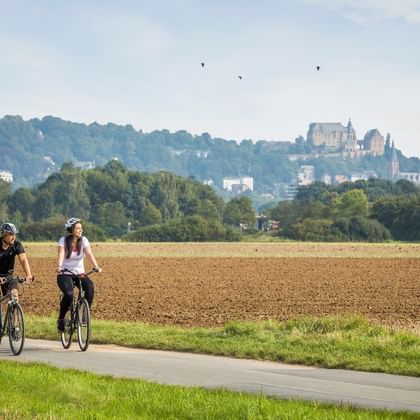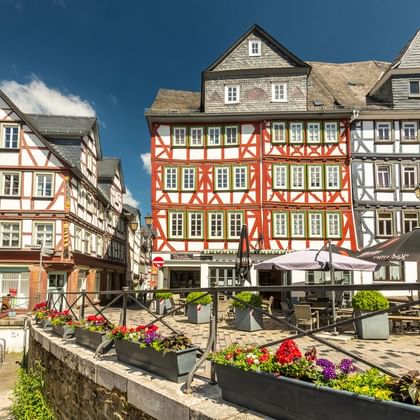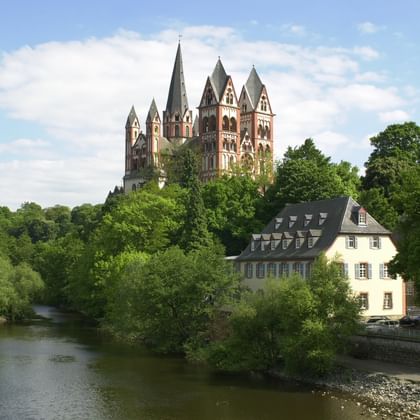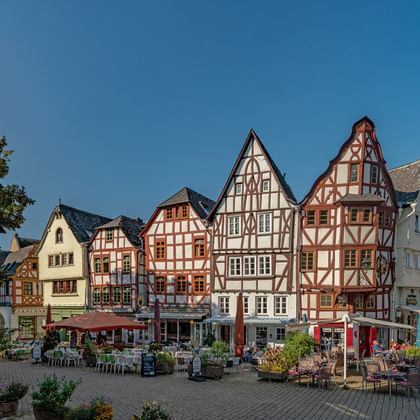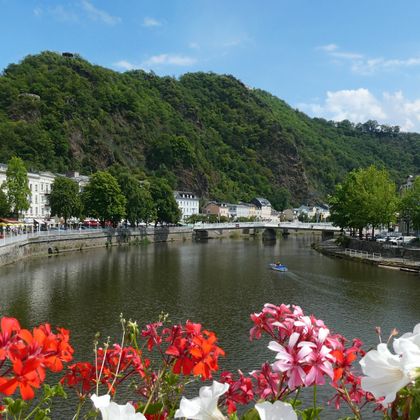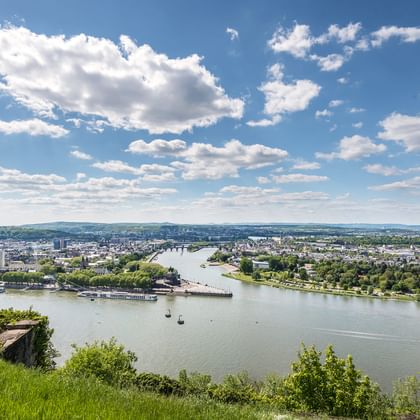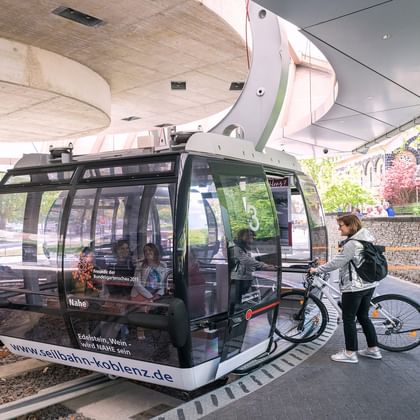Tour
You should take your time for a short visit of the old town . The famous Elisabeth church and the landgraves' palace are worth visiting, too. In the evening you can enjoy wonderful hours in international restaurants or in students pubs.
Look forward to the beautiful Lahn cycle path, which leads through the wide Lahn valley past idyllic bathing ponds to Wetzlar. Explore Wetzlar's old town and the interesting cathedral on an afternoon stroll. Stroll through the medieval market square, discover steep stairs, narrow streets and romantic corners. Experience the modern side of Wetzlar on the optics course. Here you will discover optical phenomena, such as a large diamond made of optical glass, which reflects the light with a sparkle, or a kaleidoscope with infinite reflections.
You leave Wetzlar over the stone bridge and soon you will reach the Fortuna pit (+ approx. 8 km), the only iron ore mine in Germany where ore mining is demonstrated using original machines underground. The route to Weilburg, whose renaissance castle is located on a high rocky ridge above the Lahn, remains unforgettable in the landscape. In the afternoon you can look forward to a tour of the palace complex with its sumptuous and representative interiors. Treat yourself to a cafe in the baroque palace garden with its orangery, visit the palace church and marvel at the palace courtyard, which annually forms the backdrop for the famous Weilburg palace concerts.
The course of the river winds it's way between Taunus and Westerwald today. You cycle idyllically on the paved path via Aumenau and Runkel to Limburg. The Limburg Cathedral, also known as St. George's Cathedral, towers above the old town next to Limburg Castle. This high location on the rocks above the Lahn ensures that the cathedral is visible from afar. It is considered to be one of the most beautiful creations of late romanesque architecture. Not only is a visit to the world-famous Limburg Cathedral an absolute must, but also a stroll through the city center, because it is one of the most beautiful old towns in Germany!
Enjoy a scenic highlight today: away from any traffic, you roll along the Lahn cycle path through an untouched valley landscape from Diez to Balduinstein. This day has one climb in store. Afterwards, take a break at Arnstein Monastery or Nassau Castle before cycling into Bad Ems. You will be thrilled, because your first look is at the architectural gem of Bad Ems: the Kurhaus, the Kurcafe, the Marble Hall, the Kurtheater and the casino are presented in a long row. This "chocolate side" of the Lahn finds a worthy and beautiful continuation in the gardens of the park. Enjoy your stay and let your mind wander.
After 12 km the Rhine valley opens before your eyes. Here you can crown your bike tour with a detour (+ approx. 29 km) via Boppard and St. Goar to the Loreley. Climb the famous rock in peace, which was the fate of so many boaters, immerse yourself in the hustle and bustle of the lively wine village of Boppard or escape with the chairlift to lofty heights and marvel at the unique view of the Rhine loop. On Mondays, you cycle directly from Bad Ems to Koblenz (17 km) and enjoy a castle tour by boat. On all other days, you can continue along the Rhine to St. Goar (46 km) and from there enjoy the return trip by boat to Koblenz.
Today your beautiful trip ends after breakfast in Koblenz in the hotel. If you want to go back to Marburg, we recommend our handy return transfer service (departure at 9am, duration approx. 2 hours), which will take you directly from the hotel in Koblenz back to the start hotel.
The boat trip on the Rhine from St. Goar / St. Goarshausen to Koblenz runs Tuesday - Sunday (from end of April 2026).
If you have the boat trip on a Monday, you cycle from Bad Ems directly to Koblenz and then embark on the exciting castles and palaces round trip by boat from Koblenz. This is also included in your trip.
map
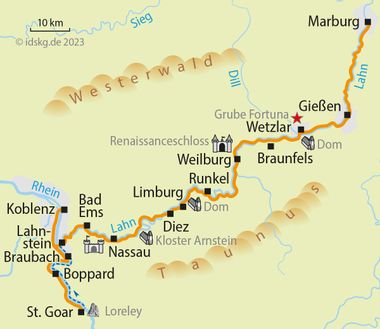
Prices / Dates
Services / Info
- Accommodation incl. breakfast:
Category A: Comfortable middle-class hotels, mostly in the center
Category B: partly family-run inns and smaller hotels, up to 5 km from the center - Room with shower/bath/WC
- Luggage transport
- Digital route guidance via smartphone app
- Tips for tour preparation
- Touristic information
- 7 days hotline service
- boat trip on the river Rhine (possible from end of April 2026)
Worth knowing about the bike tour Lahn: classic from Marburg
Below you will find specific and helpful information. If you have further questions about this trip, you simply call us: Phone: +49 (0)6421 – 886890.
Arrival by train
Marburg can be easily reached by train from all major cities in Germany. The best way to get to our partner hotels in Marburg is a short taxi ride from the train station. You can find information on timetables and prices at: www.bahn.de
Parking facilities at the arrival location
Our partner hotels in Marburg offer good parking options with costs for the entire duration of your bike trip, a reservation is not necessary. You will receive detailed information about the parking options at the hotel booked for you with the detailed travel documents two weeks before the start of your journey.
Condition of cycle paths
The Lahn cycle path leads through charming and varied landscapes with forests, hills, meadows, floodplains and steep slopes dotted with rocks. In 2006, the Lahn Valley Cycle Path was one of the first cycle paths in Germany to be awarded 4 out of 5 possible stars by the ADFC. Among other things, it was assessed for its navigability, signposting, safety and tourist infrastructure.
You cycle on mostly flat, asphalted cycle and hiking paths away from traffic, with only the occasional small climb to contend with. The route is well and uniformly signposted throughout. For the most part, a railroad line runs parallel to the cycle path.
Current information on the route can be found on the website of the Lahntal Tourismus Verband e.V.: Current tips and information
Transfer back to the starting point of the journey
Daily at 9am there is the possibility to use our transfer service back to Marburg (approx. 2 hrs). Pick up is at your hotel and the bus takes you back to your first hotel, thus ensuring a perfect return service. If you bring your own bicycles, an additional fee will be charged.
Extra costs which are not included in the tour price
A possible tourist tax and charging fees for bicycle batteries are also not included in the tour price and must therefore be paid at the hotel on site.
7 days hotline service
Just in case the bike chain breaks, flooding makes it impossible to continue your tour or any other nasty surprise: You can reach us seven days a week and we will do anything to help you as fast as possible.
Passport and visa requirements
For EU citizens, there are no special passport or visa requirements and no health formalities to be considered for this trip.
Travel insurance
The tour price already includes the statutory insolvency insurance. In addition, we recommend that you take out travel cancellation insurance upon receipt of your travel confirmation in order to protect yourself against financial disadvantages in the event of travel cancellation, interruption of travel, illness or accident.
Englisch: For this trip, we recommend using digital travel documents in the interest of sustainability. However, if you prefer, you can choose printed travel documents with a cycling map during the booking process. Please note that price differences may apply depending on your selection.
Available rental bikes
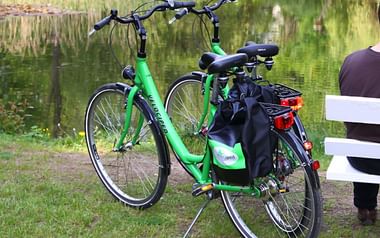
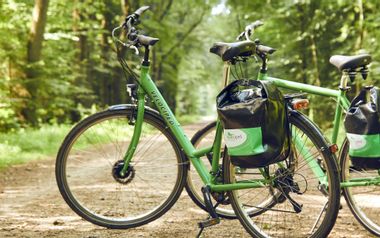
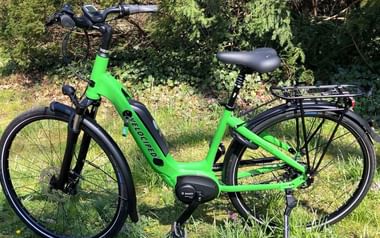


We would recommend the 7-speed tourer for all those that are looking for a back-pedal brake and wide gel seat for maximum comfort in an upright sitting position. It is equipped with a simple hub gear shift and is perfectly suited to tours on flat to slightly hilly terrain.

The 27-speed tourer is the best choice for cyclists that value the advantages of the dérailleur gear shift for flexibility whilst going up and down hills. This bike allows you to be a little more active without compromising on saddle comfort and practical everyday suitability.

E-bikes combine a lot of advantages. The electric drive ensures a completely relaxed cycling, even during long tours or on hilly routes. Other features, such as a suspension seat post and front fork plus well-tuned gears, ensure additional riding comfort.

On this trip, you can choose between e-bikes with a back-pedal brake or a freewheel. The e-bikes with a freewheel also offer you excellent riding comfort with a suspension seat post and front fork. Please simply indicate your preference when booking.

I provide you with advice and assistance
Steffi Groß
